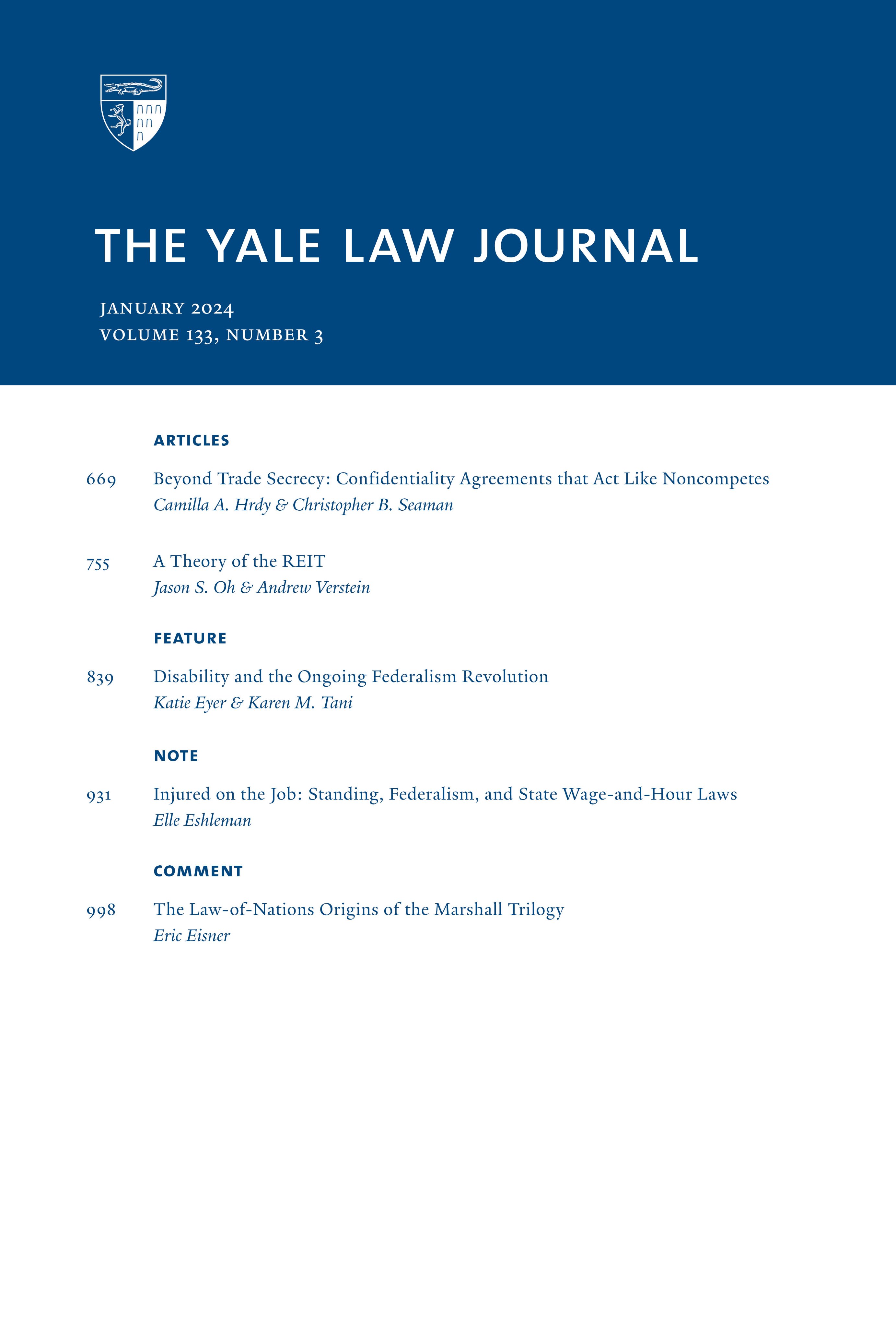如何拯救最高法院
IF 5.2
1区 社会学
Q1 LAW
引用次数: 16
摘要
大法官布雷特·卡瓦诺(Brett Kavanaugh)获得最高法院确认的后果是巨大的。卡瓦诺取代了大法官安东尼·肯尼迪(Anthony Kennedy),使保守派获得了新的多数席位,并代表着共和党在数十年来围绕最高法院控制权的党派斗争日益激烈之后取得了惊人的胜利。其结果是,最高法院的法官可能会比美国历史上任何时候都更一致地按照党派路线投票。这一事态发展严重威胁到法院的合法性。如果在未来大约有一半的美国人对最高法院提供公正司法的能力缺乏信心,那么最高法院解决重要法律问题的权力将处于严重危险之中。此外,许多民主党人已经在呼吁进行诸如法院填塞之类的改革,以防止新的保守派多数派阻碍渐进式改革。即使有正当理由,这种行动也可能引起进一步升级,使法院的形象和法治受到严重损害。即将到来的危机是可以阻止的。但是,要挽救最高法院作为一个凌驾于政治之上的机构的合法性,就需要彻底反思最高法院两个多世纪以来的运作方式。在本专题中,我们概述了最高法院改革的新框架。具体来说,我们主张的改革应该是合乎宪法的(因此可以通过法规实施),并且即使最初使用“强硬”策略实施,也能够创造稳定的平衡。在这个框架下,我们评估了现有的建议,并提出了我们自己的两个建议:最高法院彩票和平衡板凳。无论政策制定者是否采纳这些精确的建议,我们的框架都可以指导他们寻求亟需的改革。我们可以挽救最高法院的优点——但前提是我们愿意改革最高法院。本文章由计算机程序翻译,如有差异,请以英文原文为准。
How to Save the Supreme Court
The consequences of Justice Brett Kavanaugh’s Supreme Court confirmation are seismic. Justice Kavanaugh, replacing Justice Anthony Kennedy, completes a new conservative majority and represents a stunning Republican victory after decades of increasingly partisan battles over control of the Court. The result is a Supreme Court whose Justices are likely to vote along party lines more consistently than ever before in American history. That development gravely threatens the Court’s legitimacy. If in the future roughly half of Americans lack confidence in the Supreme Court’s ability to render impartial justice, the Court’s power to settle important questions of law will be in serious jeopardy. Moreover, many Democrats are already calling for changes like court-packing to prevent the new conservative majority from blocking progressive reforms. Even if justified, such moves could provoke further escalation that would leave the Court’s image and the rule of law badly damaged.
The coming crisis can be stopped. But saving the Court’s legitimacy as an institution above politics will require a radical rethinking of how the Court has operated for more than two centuries. In this Feature, we outline a new framework for Supreme Court reform. Specifically, we argue for reforms that are plausibly constitutional (and thus implementable by statute) and that are capable of creating a stable equilibrium even if initially implemented using “hardball” tactics. Under this framework, we evaluate existing proposals and offer two of our own: the Supreme Court Lottery and the Balanced Bench. Whether policymakers adopt these precise proposals or not, our framework can guide their much-needed search for reform. We can save what is good about the Court—but only if we are willing to transform the Court.
求助全文
通过发布文献求助,成功后即可免费获取论文全文。
去求助
来源期刊

Yale Law Journal
LAW-
CiteScore
4.50
自引率
6.20%
发文量
0
期刊介绍:
The Yale Law Journal Online is the online companion to The Yale Law Journal. It replaces The Pocket Part, which was the first such companion to be published by a leading law review. YLJ Online will continue The Pocket Part"s mission of augmenting the scholarship printed in The Yale Law Journal by providing original Essays, legal commentaries, responses to articles printed in the Journal, podcast and iTunes University recordings of various pieces, and other works by both established and emerging academics and practitioners.
 求助内容:
求助内容: 应助结果提醒方式:
应助结果提醒方式:


